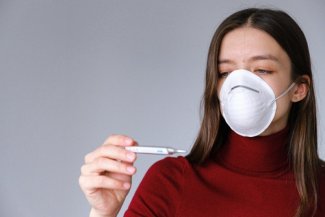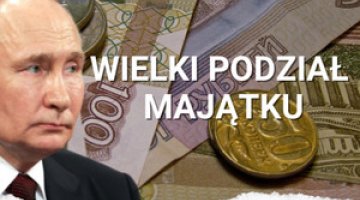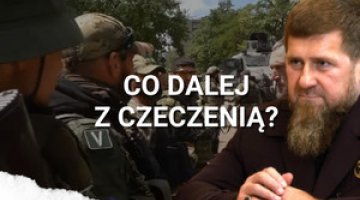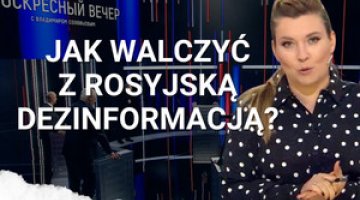Russia: the pandemic’s fourth wave

In recent days, more records for deaths caused by COVID-19 have been set in Russia. According to official figures, last week saw the highest numbers of new cases (over 36,000 on 21 October) and deaths (over 1000 people a day) since the beginning of the pandemic. The most difficult situation in terms of new infections is in Moscow (around 7000 a day), St. Petersburg (around 3000) and the Moscow region (3000). As for deaths, Moscow and St. Petersburg are also in the lead (around 70 a day), followed by Krasnodar krai (around 40).
The government has decided to introduce restrictions aimed at reducing the rate at which COVID is spreading. 30 October to 7 November will be non-working days throughout Russia (although salaries will still be paid), and in regions where the situation is most difficult, these measures could be introduced as early as 23 October. In addition, the Kremlin has recommended that the regions consider limiting access to selected facilities (including workplaces) on the basis of certificates (QR codes) confirming vaccination or recovery from an infection, as well as referring people over 60 who have not been vaccinated or infected for a month of self-isolation (assuming that they will use this time to get vaccinated); in many regions, some of these restrictions have formally been in place since the beginning of summer. The federal authorities are also developing a new business support programme. According to governmental analyses, small and medium-sized enterprises will lose out thanks to the restrictions, so the plan is to give them a one-off payment equal to the subsistence minimum per employee to cover salaries or other costs, and to offer them low-interest (3%) loans.
Commentary
- The fourth wave of the pandemic in Russia – and the most dangerous so far, according to official data – has smoothly followed the previous spike in the figures recorded in late June and early July this year, at the peak of which more than 24,000 new infections were being registered daily. After that the number of cases was reduced to around 17,000 (at the beginning of September), but the number of deaths throughout this period has remained at a constant, very high level of about 800 a day. This figure started to increase again from the end of September, and is now running at over a thousand. The persistently high death rate is caused by the predominance of the virus’s delta variant, as well as the low level of vaccinations. As of 20 October, only 36% of the population had been vaccinated with the first dose and 33% with two doses.
- The official data on the epidemic in Russia has caused much controversy among domestic experts (epidemiologists and statisticians). First, they point out that it is impossible for the number of deaths to have remained at the same level for three months. They claim that while in previous months they had doubts about the results presented by individual regions, they now fear that they are also being underestimated at the federal level. This theory is supported by the comparison of the excessive mortality numbers recorded by Rosstat. While the curve of excessive mortality since the beginning of the pandemic basically coincides with the curve of new cases of COVID-19, the number of deaths it has caused has been underestimated significantly. According to Rosstat’s data, in the period from April 2020 to September 2021 over 600,000 more people died in the Russian Federation than the average over the last five years (an increase of almost 27%). However, the official statistics state that about 225,000 fatalities have been caused by COVID-19, which still represents one of the highest results in the world. The greatest increases in mortality have occurred in the regions of the Russian North Caucasus: Chechnya (42%) and Ingushetia (over 44%). This indicator also remains above average in Moscow and St. Petersburg, amounting to 37% and 33% respectively.
- The Kremlin’s anti-COVID policy has largely been determined by the political calendar. In July 2020 a national vote on changes to the constitution took place, and on 19 September this year parliamentary elections were held. The government was aware of the public’s negative attitude to the restrictions (wearing masks, compulsory vaccinations for employees in selected sectors of the economy, the need to have QR codes), and so did not want to increase their dissatisfaction; to this end, they were somewhat lax about monitoring these restrictions, and decided not to introduce any new ones. Since a restrictive lockdown was introduced in the country during the first wave of the pandemic (late April/early May 2020), the Kremlin has basically ignored the subsequent increases in the infection and death figures. Moderate restrictions have been introduced by individual regions, and not necessarily in those places where the situation was the most difficult. In addition, mass events have been held around the country, with virtually no restrictions on the number of participants. Furthermore, the Kremlin introduced non-working days in early May this year (when the incidence was much lower than at the end of June), while most establishments and restaurants continued to function normally at that time. The week off currently being introduced cannot really be called a lockdown, because so far there is no sign that citizens will be forced to self-isolate and stay in their homes.
- Russian society is approaching the Kremlin’s anti-COVID policy with a great deal of distrust. Despite the large-scale death toll, most people are ignoring the obligation to wear masks and are reluctant to get vaccinated. According to public opinion polls, more than 55% of citizens do not want to get vaccinated. This fact – together with the government’s strategy of forcing them to submit to vaccination (at present there are only a few regions which do not demand vaccinations for selected categories of employees) – means that the black market for vaccination certificates is growing. According to Russian experts, the share of false certificates may be as high as 25%, and a significant part of these documents have been completely legalised in the state vaccination system (as they have been falsified by the persons responsible for entering data into the system). Russians are prepared to spend up to US$500 on obtaining such false documents.
- It is difficult to determine how the proposed restrictions will affect the economy. This will depend primarily on how strict the measures prove to be. It should be remembered that the period of 4–7 November is a public holiday in Russia anyway. Moreover, if the Kremlin does not decide to suspend the operation of larger enterprises (as it does not seem willing to finance the necessary compensation from the state budget, which the development of the business support programme seems to confirm), then the consequences of the restrictions will mainly be borne by the services sector and small business. This will lead to the latter being burdened with most of the costs. The support system which the government is preparing will not be able to compensate the losses incurred by the service sector. To a great extent, it has not yet paid off those that were incurred during the 2020 lockdown. As the experience of implementing QR codes has shown, Russians are unwilling to patronise businesses which have introduced such restrictions (especially since they have been avoiding getting the vaccination).





